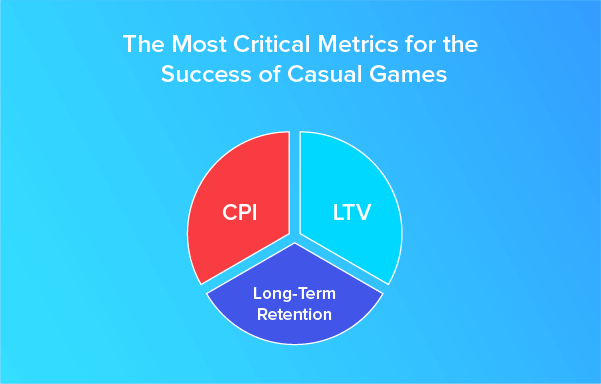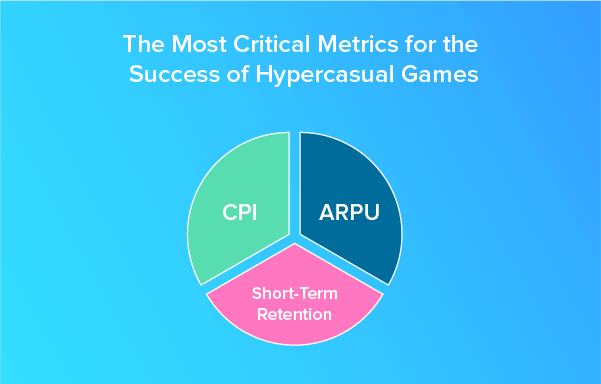
The 6 KPIs That Every Mobile App Marketer Should Track
Utku Altunkıran began his career in gaming at Wixot Games, a London-based mobile game publisher, where he was responsible for creating and driving the user acquisition strategy and product managing their portfolio of games. After working as a User Acquisition Manager at Kidly, a mobile app company that provides fun, educational and exclusive content for kids, Utku continues his career as Growth Manager at Animation International Turkey where he is responsible for driving profits and analyzing and enriching the data they collect.
Read the blog in Turkish.
Every digital marketing expert will tell you about the importance of creatives in user acquisition (UA). But to drive long-term results, it’s important to measure your creatives correctly. What metrics should you look at, and which ones do you prioritize?
In this blog, I will reveal the metrics I focus on when analyzing creative performance. Although KPIs will differ based on the type of app you are marketing, I’ll outline the KPIs that are most important across all app categories.
1. CPI (Cost Per Install):
CPI refers to the average cost of acquiring a user. How much do you spend on advertising in order to get a user to download your app? Using this metric, you can analyze how well your creatives are performing and compare them against each other by looking at CPI differences. You can also do a bit of research to find CPI benchmarks for your app vertical, the platform you are using, and the country you are running the campaign in. You can find a lot of information just by doing a simple search. This will show how your creatives stack up against the average.
CPI helps you interpret the LTV value which you can calculate via this simple formula:
LTV = ARPU / User Churn Rate
As your churn rate increases, your LTV will decrease. In other words, LTV value is directly related to user engagement and user retention. The LTV represents the maximum value for your CPI if your app is to remain profitable. For example, if our LTV value is $25 on US iOS for ‘‘Game X’’, our creative CPI must be less than $25 to generate profit.
The CPI metric on its own will not be enough to evaluate the success of a creative, but it is a critical KPI to look at.
2. CTR (Click Through Rate)
CTR refers to the percentage of users who clicked your ad. By looking at the CTR metric, you can accurately measure how much interest your ads are attracting.
The CTR value of an ad can be easily found via the formula:
CTR = Clicks / Views
For example, in a scenario where an ad is viewed 72,000 times and clicked 3,600 times; CTR = 3600 / 72000 = 0.05 i.e. 5%.
I believe that the two most important factors in ensuring successful creative performance are a good App Store Optimization (ASO) strategy—one which drives users to your app page and increases downloads for your app—and creative messaging that perfectly captures exactly what your product offers. Here are a few things you can do to create a good ASO strategy:
- Use a descriptive app title
- Use an eye-catching app icon design
- Run an effective keyword analysis
- Write an impressive description
- Use high-quality screenshots
- Respond to users’ store reviews quickly
- Closely follow the app stores ranking and make changes when needed
3. Impressions
Since Apple’s iOS 14.5 update, even the biggest UA platforms are struggling with the delay in data flow for app installs and subscriptions. But by relying on machine learning algorithms from Facebook and Google, it is possible to see how your creatives are performing by looking at impressions numbers in the first few days of your campaign. Creatives that receive a low number of impressions can be identified quickly. You can then adapt your creative strategy accordingly.
It is also important to determine whether your creative is scalable as you evaluate performance. When creatives exceed 10K impressions, you should also observe changes in CPI, CTR, frequency, and CVR. If your creatives are still performing well, then it’s time to gradually increase your budget. If your creatives are not performing as impressions increase, then budgets should stay the same or be reduced. If the creatives have lost their profitability completely, it’s time to turn off the campaign.
4. CVR (Conversion Rate)
A conversion is the final action you want your user to take, whether it’s booking a flight, purchasing an item or subscribing to a service. Conversion rates tell you how well your ads have worked.
To calculate CVR you can follow this simple formula:
CVR = (Visitors Who Take the Desired Action / Total Visitors) x 100
Before setting up a campaign, you need to define what is the most important conversion metric for you. Is it “app install”’, “reach”, “’subscription”’ or “in-app purchase”? At this point, you need to determine the main success criteria for your creatives and the campaign you are setting up, and define the conversion metric accordingly in the campaign structure. This in turn strengthens your store presence.
5.
The CPC metric represents the average cost per click of your creative. You can calculate your creatives’ CPC by using the following formula:
CPC = Total Cost Of Ad / Number Of Ad Clicks
Generally, assume that creatives with lower CPC metrics will also have lower CPIs and achieve better performance. In order for this to happen, you must ensure your creative messaging matches the product you are marketing and that you have a successful ASO strategy.
6. CPM (Cost Per Mille)
CPM indicates how much you pay per 1000 impressions. This metric allows you to understand how easily your creative generates impressions. Tracking your CPM can give you lots of information. For example, you can compare it to your CPI and see how effective your ad is. Maybe it’s very good at getting people to look at the ad but not to install the app, then you can adjust your creatives or your ASO listing to see if the conversion rate improves. Pay special attention to creatives that cost less to reach 1000 impressions. This will positively affect your overall UA performance.
There’s no single foolproof method to measuring the success of your creatives. Mobile app marketing is always evolving, and there may be new KPIs being better suited for measuring your creative performance in the future. That said, the KPIs above can help to paint a clearer picture of just how well your creative strategy is doing and where you might want to make improvements. Be sure to evaluate closely what makes the most sense for your particular app and have the proper measurement tools in place. Afterall, if you don’t measure it, you can’t improve it.

